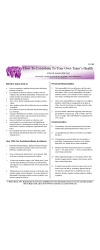Category: FAQ-Communication
Sweetspot: Communicating Positively and Negatively
Avoiding Overly Positive and Overly Negative Communication The Sweet Spot Between Overly Positive and Overly Negative Communication: Glass Empty, Glass Full You’ve heard the phrase: “There’s two kinds of people. Those that see the glass as half full, and those…
What is the “less is more” principle of effective communication?
In informal speech and communication, people have a tendency to talk, and talk, often is a slightly disorganized fashion, since informal speech is not the kind of thing you can plan out. It may surprise you to know that in…
Less Is More In Communicating Your Message
Less Makes Better Communication Why LESS Communication Is More Effective To Make Your Point Whether we are trying to communicate a point face to face, on the Internet, on the phone, or to groups of people, many of us have…
Should I intentionally communicate differently depending on the medium? Why?
The answer to this is a resounding yes, but chances are either you already knew that, or unconsciously alter how you communicate depending on the medium. For example, when you write a report, do you communicate the same as you…
What’s the biggest myth/misconception about communication? – Verbal, Nonverbal, Meharabian, Mehrabian
Poor old Albert Mehrabian. His research on the contributions of verbal and nonverbal components of communication are the most misunderstood, misattributed, and confused amongst all the communications discussions around the world. And what’s worse, they can’t even get his name…
What is Miller’s Law and what is it for?
Miller’s Law was formulated by George Miller, Princeton Professor and respected psychologist. It reminds us of the importance of suspending judgment about what someone else is saying, so one can first try to understand what the person is saying without…






